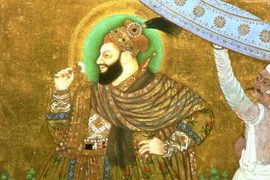“Over the many years, I truly enjoyed not being required to defend my interpretations. I could just work with the greatest of pleasure. I never felt the need nor the desire to defend my views. If I turned out to be wrong, I just forgot that I ever held such a view. It didn’t matter.” Barbara McClintock
Have you ever noticed how the kernels of certain varieties of maize vary in colour? Why? The answer is found in the manner in which specific genes are expressed. These corn cobs were used in Barbara McClintock’s genetics and “jumping genes” research. She demonstrated that portions of the corn’s genetic code may move from one location to another inside its chromosomes. This is why maize kernels vary in colour.
Throughout her career in cytogenetics, McClintock made discovery after discovery. But she is most known for finding genetic transposition (sometimes called “jumping genes”). Even today, understanding the phenomena is critical to understanding genetics, topics in medicine, evolutionary biology, and other fields.
Some of the most significant genetic discoveries have been achieved with the assistance of different model organisms, which are popular among scientists because of their broad availability and simplicity of maintenance and proliferation. One example was Zea mays (maize), specifically those plants that yield variable-coloured kernels.
It took some time for McClintock’s findings to be generally recognised. However, they have had a transformative impact on the science of genetics, and Barbara McClintock received the Nobel Prize in Physiology or Medicine in 1983.
McClintock enrolled at the Cornell College of Agriculture at the age of 17 in 1919. Her mother almost stopped the talented young woman from pursuing her higher education; she thought a college degree would damage her marriage prospects. So, she discouraged her daughter from attending Cornell.
At the same time, McClintock’s father returned from the Army Medical Corps in France. Thanks to him, McClintock became a remarkable name in the study of Genetics. She flourished at college, where she was a member of the student government, played banjo in a jazz band, and succeeded academically. There, she enrolled in the genetics course that would alter the direction of her life.
In the 1920s, genetics was still in its infancy. Cornell offered just one undergraduate course. However, McClintock jumped right in, developing a lifetime passion for cytogenetics—the study of chromosomes and their genetic expression.
She received her bachelor’s, master’s, and doctorate degrees from Cornell and successfully researched maize cytogenetics. Still, finding a stable job in the middle of the years of depression was difficult. McClintock was eventually recruited as an associate professor at the University of Missouri in 1936. But teaching was a diversion from her focus.
In 1941, she quit her academic position to work at Cold Spring Harbor Laboratory, a Carnegie Institution-funded research institution. Early in her studies at Cold Spring Harbor, McClintock started studying the mosaic colour patterns of maize at the genetic level.
She had seen that the kernel patterns were much too unstable and altered far too often over many generations to be called mutations. To uncover the mystery behind these alterations, McClintock realised that the answer defied accepted genetic theories. She spent her career studying the cytogenetics of maize, producing discoveries far beyond the time’s knowledge.
McClintock discovered by examining multiple generations of maize plants that specific genes may move around or “transpose” inside chromosomes, switching physical characteristics on or off based on specific “controlling elements.”
She discovered that each kernel represents an embryo generated by single fertilisation. Hundreds of offspring may be scored on a single ear, making maize an excellent organism for genetic research.
Indeed, maize proved to be an ideal plant for researching transposable elements (TEs), often known as “jumping genes.” She found this in the mid-twentieth century. McClintock’s work was groundbreaking in proposing that an organism’s genome is not fixed but susceptible to change and rearrangement.
She knew that her study deviated from conventional knowledge. McClintock knowingly delayed releasing her ideas on genetic transposition and regulating elements until other researchers verified her findings. Finally, she presented her results at Cold Spring Harbor Laboratory’s annual symposium.
“They thought I was crazy, absolutely mad,” McClintock had said, recollecting how the audience was perplexed at the best and hostile at the worst towards her theory. Scientists mostly disregarded her work for more than a decade. She was not discouraged; she persevered, believing in herself and the facts beneath her magnifying glass.
“I was just so interested in what I was doing I could hardly wait to get up in the morning and get at it,” McClintock had said. “I just knew I was right. Anybody who had had that evidence thrown at them with such abandon couldn’t help but come to the conclusions I did about it.”
McClintock stopped publishing and lecturing about her studies. She gave up on attempting to persuade others, but she never stopped researching. Finally, in the mid-1960s, similar conclusions sprung up within the scientific community. This confirmed her results and gave her the recognition that was long overdue.
More than 30 years later, McClintock was awarded the Nobel Prize for her discoveries and contributions to genetics. She remained in Cold Spring Harbor until her retirement in 1967—and even beyond, as a scientist emerita until her death at the age of 90. Beyond her findings, McClintock leaves a legacy of remarkable perseverance and is remembered as a woman who changed science.
-30-
Copyright©Madras Courier, All Rights Reserved. You may share using our article tools. Please don't cut articles from madrascourier.com and redistribute by email, post to the web, mobile phone or social media.Please send in your feed back and comments to [email protected]











